Main navigation
Mission
The mission of the Department of Communication Sciences and Disorders at the University of Iowa is to generate, disseminate, and apply knowledge of normal and impaired processes of human communication. We accomplish this mission by conducting research, educating students at the undergraduate and graduate levels, and providing clinical services to children and adults with disorders in speech, voice, language and/or hearing.
Core values
- We are bound to our educational commitment and strive to meet it by sharing our collective knowledge and understanding with students, our patients and their families, the general public, and collaborating colleagues in clinical practice and academia.
- We accept the challenge and responsibility to advance scientific knowledge of communication sciences and disorders through collaborative basic and clinical research.
- We pledge to provide the highest quality of ethical clinical services to the people of Iowa and all others who entrust us with their care.
- We commit to foster a culture that protects free expression of thought and encourages diversity, honesty, openness, accountability, and integrity.
- We hold ourselves to the highest criteria of professional and scholarly ethics.
- We pledge to diligently work together as a team, support, respect, and encourage one another.
Vision
Our vision is to be recognized as the premiere educational institution for advancing basic and applied knowledge of all aspects of communication sciences and disorders, from the laboratory bench to the clinic. To this end, the department offers a number of distinct educational programs, each with specific goals:
- Bachelor of Arts (BA) in Speech and Hearing Science: The goal of the undergraduate program is to prepare students to engage successfully in graduate or professional study in speech and hearing or other fields.
- Master of Science (MS) in Speech-Language Pathology: The goal of the MS program is to graduate professionals who have the strong theoretical foundation and advanced clinical skills required for the delivery of excellent clinical services in speech-language pathology. The curriculum is designed to assure that graduates will meet both national ASHA accreditation standards and Iowa Licensure requirements.
- Doctor of Audiology (AuD): The goal of the AuD program is to offer a rigorous post-baccalaureate course of study that prepares professionals who have both strong theoretical training and advanced clinical skills required to function at a high level in all areas of audiology. The curriculum is designed to assure that graduates meet both national ASHA accreditation standards and Iowa Licensure requirements.
- Doctor of Philosophy (PhD) in Speech and Hearing Science: The goal of the PhD program is to prepare graduate students for positions of leadership in teaching and research. This is accomplished through an individualized program focused on research experience but including coursework in basic science and clinical issues related to speech, hearing, voice, and language.
History
Although interest in speech and hearing processes and their disorders was developing in several universities in the 1920s, the beginnings of this discipline are usually attributed to the pioneering work of Carl E. Seashore, head of the Department of Psychology and the dean of the Graduate College at Iowa. Under his leadership and vision, a new field was molded -- one which was truly interdisciplinary, involving experts from developmental psychology, psychiatry, otolaryngology, and pediatrics.
In 1924, Lee Edward Travis became one of the first persons in the world to receive a PhD based on study in this new field. He headed the Iowa program through the 1930s, a period during which many of the future leaders of the field were graduate students at Iowa. Many of them went on to establish programs at other major universities.
It was during a conversation with colleagues in Dr. Travis's living room that the American Speech-Language-Hearing Association was founded. His former home at 513 South Summit Street in Iowa City has been beautifully maintained as a historic private residence.
Although speech science, audiology, and other areas of study were developing in the Iowa program during the Travis era, the primary research focus was the enigmatic problem of stuttering. Work on this disorder was continued and expanded by Wendell Johnson, who guided the program through the late 1940s and early 1950s.
The importance of the new academic discipline was recognized in 1956 when Speech Pathology and Audiology became an independent department in the College of Liberal Arts (now College of Liberal Arts and Sciences). The department expanded greatly in the next two decades. Its growth was facilitated by the Wendell Johnson Speech and Hearing Center building, dedicated in 1968. Work was expanded or initiated in speech and hearing sciences, audiology, language disorders, cleft palate, neurogenic communication problems, and a number of other areas.
Throughout its history, the department has continued to reflect the concepts of its roots. The department's programs reflect a continuing commitment to scientific exploration of speech and hearing processes and their disorders is the critical pathway to future progress in diagnoses and treatment of speech, language, and hearing problems.
Iowa's central role in the development of the field of communication sciences and disorders is more fully described in the book written on the early history of the department, "Speech Pathology and Audiology: Iowa Origins of a Discipline," by Dorothy Moeller. A video history of the program was given by Dr. Eric Hunter as part of the 42nd Annual Presidential Lecture: Understanding Our Multiple Voices in 21st-Century Communication. The full speech is here: Presidential Lecture - Office of the President - The University of Iowa.
NotebookLM made the following podcast on the beginnings of speech pathology and audiology from Dorothy Moeller's book, which can be found below.
History timeline
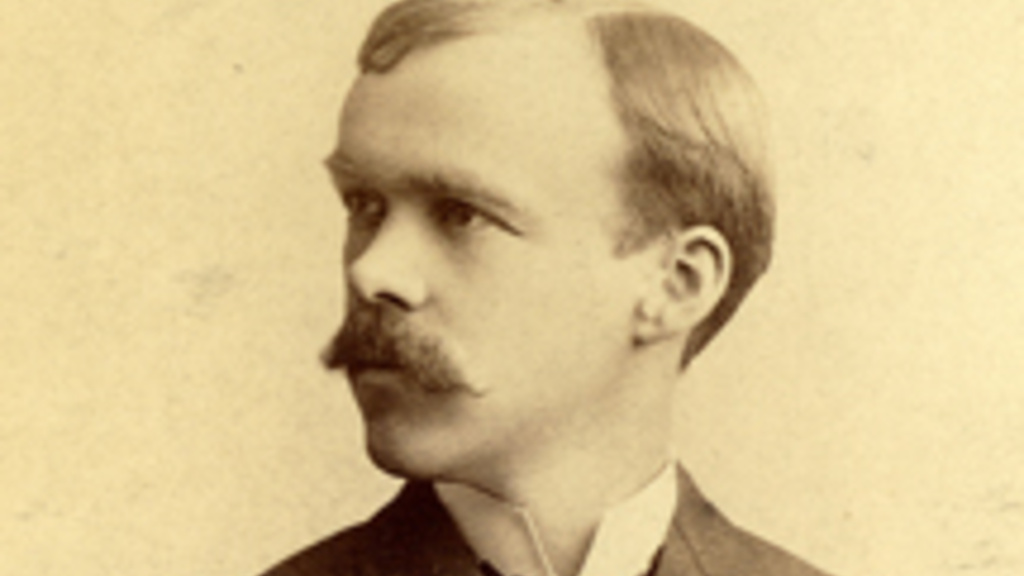 1878
1878George Thomas White (G.T.W.) Patrick earned his B.A. degree at Iowa.
- 1887
G.T.W. Patrick offered a course called Empirical Psychology from the Department of Mental and Moral Science and Didactics. He saved up fifty dollars to start-up funds for laboratory equipment. They utilized tuning forks, brain models, and charts, marking the beginning of the Iowa Psychological Laboratory.
Patrick joined the Iowa faculty as professor and head of Mental and Moral Science and Didactics.
- 1890
Iowa Psychological Laboratory was listed in the Universities Catalogue making it the fourth or fifth in the nation.
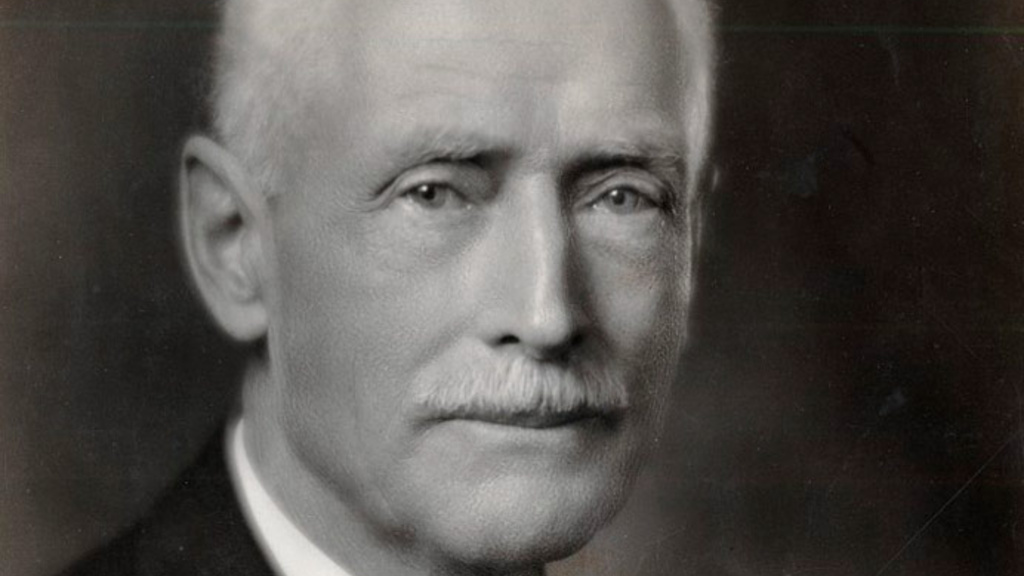 1897
1897Carl Emil Seashore was named director of the Iowa Psychological Laboratory. Seashore conducted research in psychoacoustics, designing experiments and instrumentation to measure dimensions of sound. He spent the first summer supervising a soundproofed room in Schaeffer Hall, the department’s new headquarters. Referred to as a “giant thermos bottle”, was believed to be the first in the world.
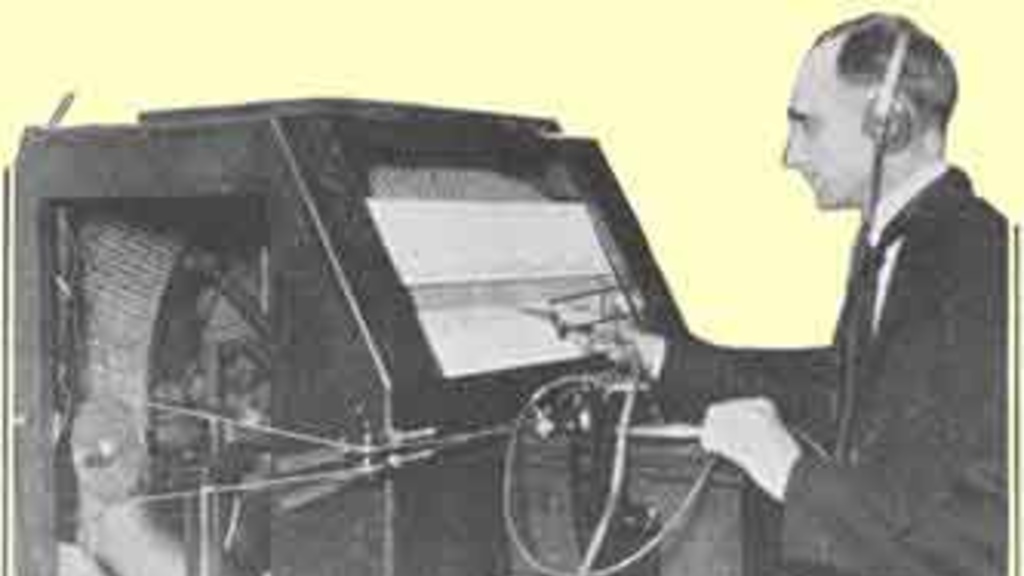 1900
1900Seashore created his first audiometer prototype which was taken over by Stoelting.
The department previously known as the Program in Mental and Moral Science and Didactics was renamed to the Department of Philosophy and Psychology with G.T.W as head. The department’s goal was to train specialists in the areas of “…reading disabilities and speech pathology.”
- 1905
Seashore succeeded Patrick as head of the Department of Philosophy and Psychology, becoming central to the pioneering efforts that would lead to the Iowa Program in Speech Pathology.
- 1908
Seashore made Dean of the Graduate School.
Seashore established the Iowa Psychological Clinic at the University of Iowa for cases of mental psychology, focusing the clinic and coursework around abnormal psychology.
- 1912
Glenn Merry, with a background in psychology and oratory, was appointed to head the Public Speaking unit within the English Department, with Seashore's vision for psychological research in speech arts.
- 1914
The Chair of Public Speaking in English became the Department of Public Speaking.
- 1916
Merry offered courses that appear to be directly related to the beginnings of laboratory and clinical work in speech pathology: "phonology and voice laboratory" and "voice". The former included the study of voice defects and their removal, and the latter focused on remedying non-organic voice defects. Seashore felt that by this year, "the pattern began to change from the old elocution" to the new voice science at Iowa.
- 1917
Through Seashores help the legislature established in Iowa, as an adjunct of the University, the Iowa Child Welfare Research Station. This program is now known as the Institute of Child Behavior and Development. It provided state funding for the scientific and systematic behavior and development of children.
This legislative decision also activated a program where graduate students from various disciplines, including psychology and speech, began working in areas related to speech.
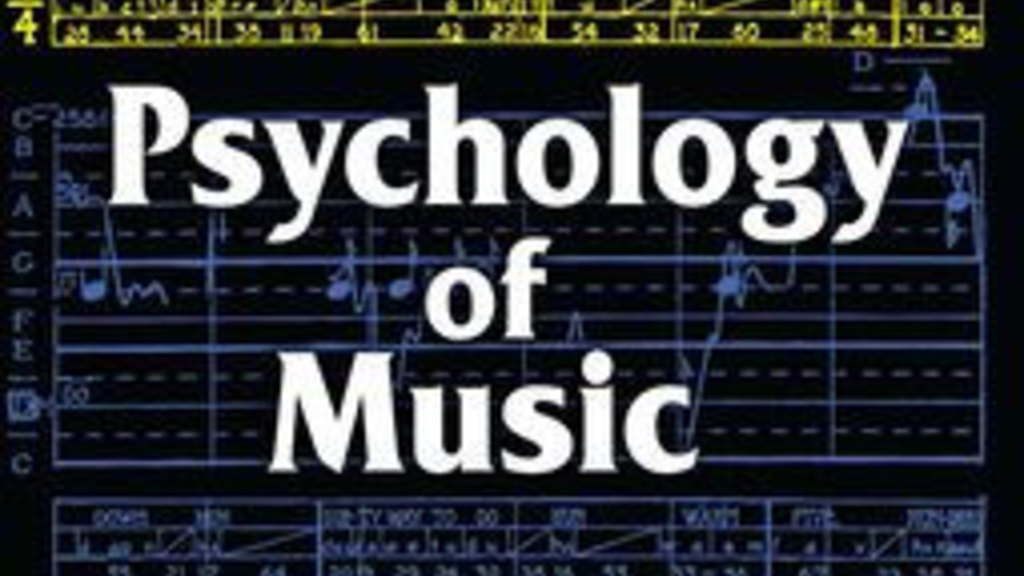 1919
1919Seashore tests of Musical Ability were created.
Sara Stinchfield (Hawk), a psychology major, completed an M.A. thesis on children's speech problems, including stuttering, which was an early instance of scientific inquiry into speech problems at the University of Iowa.
- 1920
C.C Bunch received his Ph.D. degree and Seashore referred him as a psychologist of otology.
- 1921
The Department of Public Speaking became the Department of Speech. Bryng Bryngelson was a fellow in the Iowa Speech Department.
The Program in Speech Pathology was recognized as a distinct entity within the University, initially centered in the Departments of Psychology and Speech.
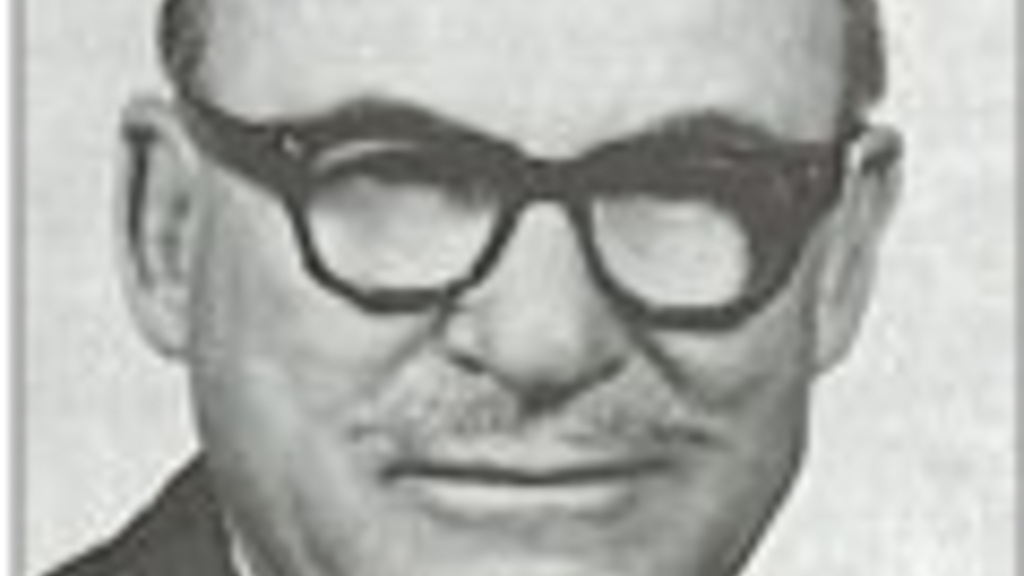 1922
1922Lee Edward Travis completed his BA at Iowa, and he was trained as the “psychologist of psychiatry” and created a plan like a doctoral plan of study today, which allowed for small stipends and access to any classes of campus.
Arminda Mowre began informal clinical work with stutterers, foreshadowing the development of a clinic.
- 1923
Travis’s MA degree was the first one counted in the department.
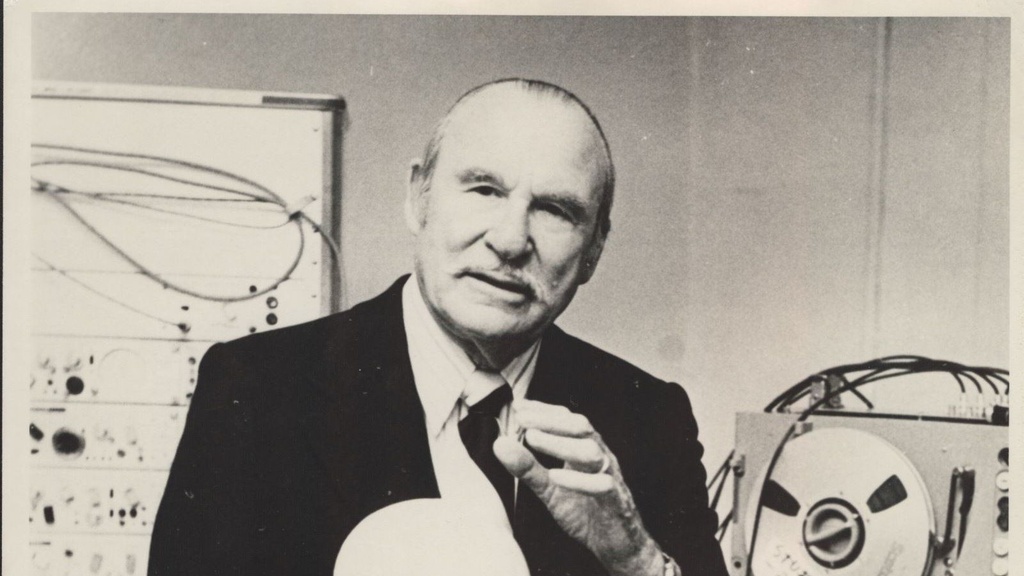
Travis Led the Program
1924-1938Roughly half of the M.A. and Ph.D. theses listed in Johnson's bibliography through 1954 were granted during the period when Travis officially headed the Iowa Program.
- 1924
Glenn Merry sectioned classes by ability causing speech problems to be given more attention than ever before. This started the informal progressive implementation of clinical services in the basic operating plan.
Travis finished his PhD as one of the first people in the world to receive a doctorate based in speech pathology.
Academic requirements were met for the doctoral degrees of Bunch (audiology) and Merry (speech science), which were fundamental to the Iowa Program.
Fletcher directed the University's first graduate theses exclusively concerned with stuttering.
- 1924-1925
Travis was listed in the University catalogue as a member of the Psychology faculty, teaching a course in the clinical psychology of speech, described as a "critical and practical survey of the theories of speech pathology" with clinical practice.... This may be the first appearance of the term "speech pathology" in print and the first course offered in it. His course was listed in both Psychology and Speech.
- 1925
Two historic meetings were held on the Iowa campus. The first, convened by Seashore and Travis, brought together professionals interested in the scientific study of speech disorders. The second, sponsored by the University of Iowa Extension Division, with E. C. Mabie in charge, is seen as the beginning of the separation of speech pathology from general speech at the national level. Sarah Barrows joined the faculty of the Speech Department to work in phonetics.
Psychology offerings included a course related to psychology of music and speech taught by Milton Metfessel.
- 1926
The University Bulletin showcased the central role of the Department of Psychology and its interdisciplinary connections, relevant to the developing program. Bryngelson received his M.S. degree, with the third thesis at Iowa to deal exclusively with stuttering.... Charles Woolbert, a pioneer in the behavioristic approach to speech, joined the department.
- 1926-1927
A speech correction course, including clinical practice, was offered in the Speech Department, taught by Travis and Bessie Rasmus.
- 1927
Travis completed his postdoctoral training and hired as an assumed many positions including Director of the Psychological and Speech Clinic.
The department was divided into separate departments of Philosophy and Psychology with Seashore heading both.
Joseph Tiffin enrolled, becoming interested in the scientific study of speech.
- 1931
Wendell Johnson preforms on a “laterality board” used to test handiness and connection with stuttering.
Assistance was sought from Dr. Lierle and Reger for instruction in hearing testing techniques and interpretation, predating the general recognition of audiology as a science. A schedule of courses was developed to train graduates at the M.A. level for professional work in speech correction, making Iowa a leader in this training.
- 1933
Lloyd N. Fymbo completed his M.A. thesis on the relation of malocclusion to articulatory defective speech, demonstrating interdisciplinary work with the College of Dentistry.
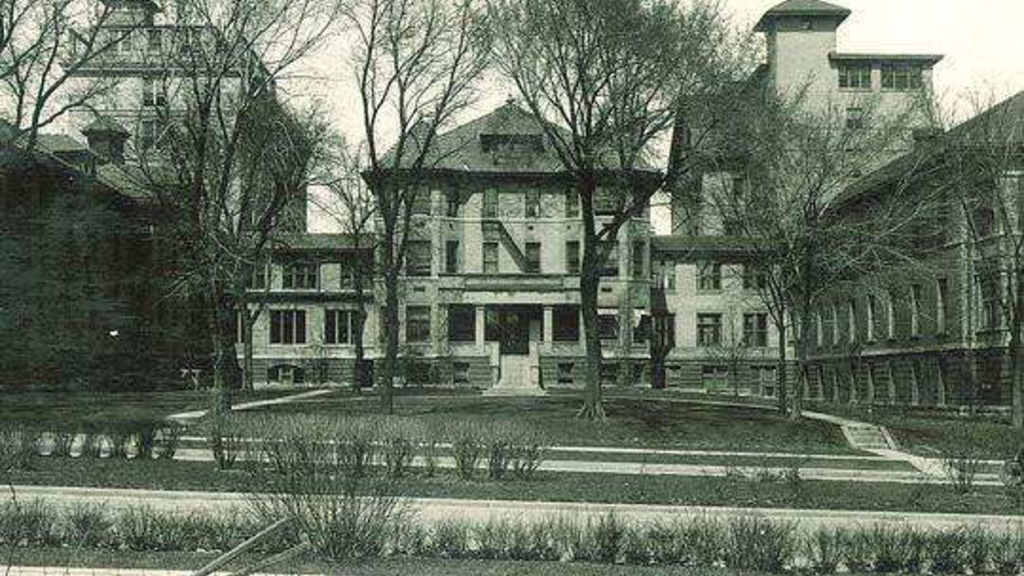 1934
1934A new soundproof room was built in East Hall referred to as the dead room.
- 1934-1937
The University of Iowa journal Archives of Speech was published, with issues focusing on experimental phonetics (edited by Tiffin) and speech pathology (edited by Travis), showcasing research within the emerging Program.
- 1935
The University of Iowa medical laboratory is one of the first in the nation to record human electroencephalography (EEG) activity, led by pioneering investigator Professor Lee E. Travis.
Charles Strother received his degree. He came to Iowa to study under Lee Travis.
- 1935-1936
Travis served as president of the National Association of Teachers of Speech.
- 1936
The Journal of Speech Disorders (now Journal of Speech, Language, and Hearing Research) began publication, with Iowa Program members contributing extensively to early issues.
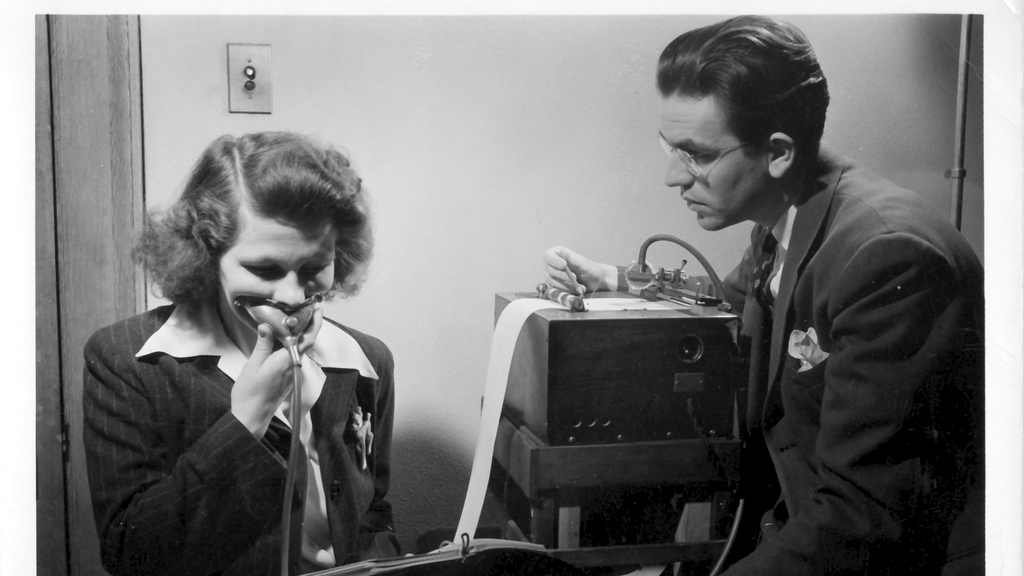 1938
1938The International Council for Exceptional Children published a survey showing over a 10-year period more studies had been done on the problem of exceptional children at the University of Iowa than any other American University.
Iowa-trained individuals headed four of the country's five well-established university speech clinics and two-thirds of the other scientifically oriented clinics.
 1939
1939Wendell Johnson taught general semantics and a course in stuttering therapy and clinical practice.
Travis gave coursework dealing with voice and articulation disorders. Charles Strother succeeded Travis as principal officer, becoming director of the Psychological and Speech Clinic.... John McGeoch became head of Psychology. Dewey Stuit joined the Psychology Department and was in charge of its reading clinic.
Johnson Started a new group for stutterers in which he used the general semantics approach. It was called the Demosthenes Club.
A group of stutterers at the University of Iowa organized the Demosthenes Club.
Charles Strother Led the Program
1939-1947- 1940
The University of Iowa became a “mecca for graduate students interested in the pioneering work being done in the scientific study of speech and speech disabilities.”
Strother taught the introduction to clinical practice in speech correction and with Johnson, Fairbanks, Reger, and Stuit, taught advanced clinical psychology.
Franklin Knower succeeded Barnes as head of the Fundamentals course. Orvis Irwin joined the faculty of the Child Welfare Research Station, focusing on children's speech development.
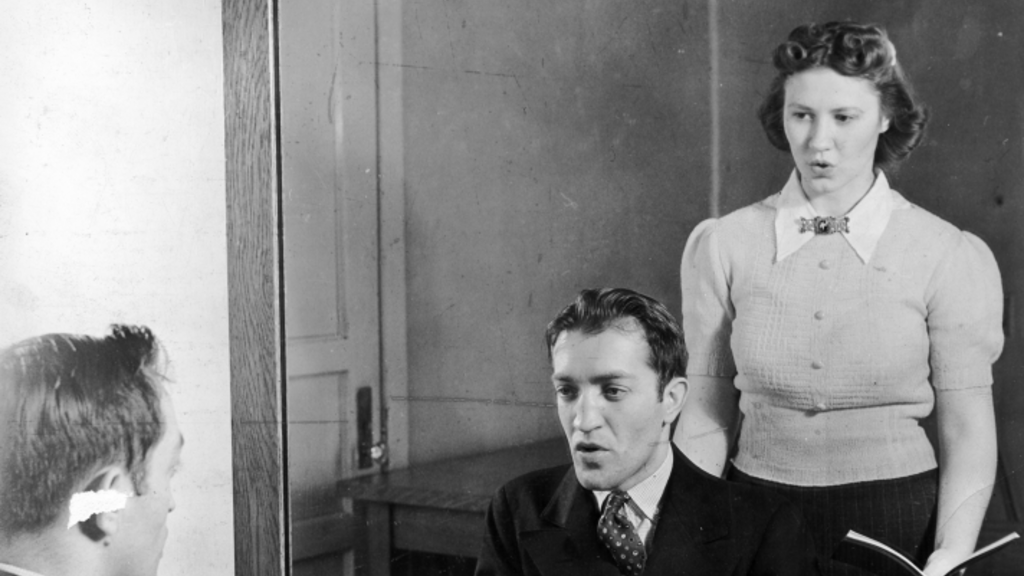 1941
1941Strother taught a course in organic disorders of speech and, with Johnson and Stuit, a course in the foundations of clinical psychology.
Strother, Johnson, and Fairbanks, then Lynch, gave individual instruction in the Speech Department.
Legislation was enacted in Iowa to establish a public-school speech and hearing program, a goal that Seashore, Travis, Reger, Johnson, and others had worked towards.
- 1943
Maude McBroom of the College of Education assisted clinical work in reading. Gladys Lynch joined the Speech Department faculty to teach speech science. Dorothy Sherman came to Iowa for doctoral work in speech pathology.
- 1945
Strother, Johnson, and Reger began teaching Clinical Practice in Speech and Hearing Disorders. They also offered training for teachers in Speech correction.
Jacqueline Keaster became a regular faculty member with a joint appointment in Otolaryngology and Speech after wartime work in audiology.
 1946
1946SRP began by Wendell Johnson to provide stuttering therapy for out-of-town children providing speech, language, and hearing services for about 30 children each summer.
First summer of Residential Clinic, rather than a summer clinic. The University catalogue was the first to carry a grouping of courses within the Program, identifying them under "Speech Pathology and Hearing Conservation".
 1947
1947President Hancher commits to paper the new clinics official name calling it the Speech Clinic. He describes it as, “an official administrative unit of the University, sponsored by the departments of speech, psychology, and child welfare…”
Strother participated in the historic Boulder Conference, which set the pattern for graduate programs in clinical psychology41. The Iowa Speech Correction Association was established.

Wendell Johnson Led the Program
1947-1955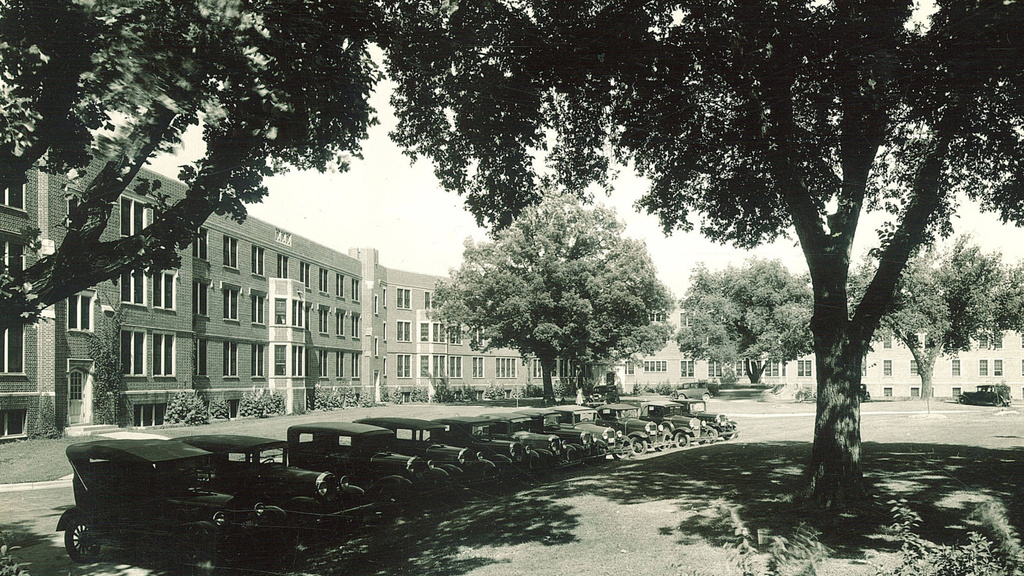 1948
1948In October the school took its first child in temporary quarters in Westlawn.
The clinic added a full-time nurse and dormitory clinicians. Under Darley's leadership, the Speech Clinic's service obligation to children in state institutions and schools was implemented.
- 1950
The heading in the Psychology section of the University catalogue became "Speech Pathology and Audiology," and the index carried this entry for the first time.
Cooperation with the School for the Deaf began formally.
- 1950-1951
Curtis obtained an anechoic chamber from Mabie, facilitating the development of the speech science curriculum.
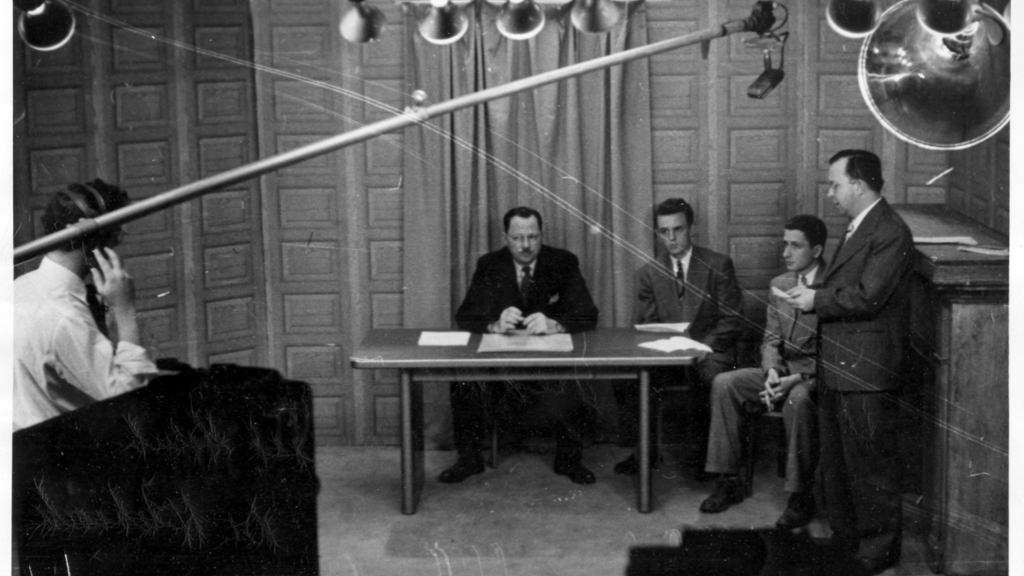 1951
1951A different program moved out of East Hall allowing them to expand and remodel more of East Hall to fit their growth needs. The Council on Speech Pathology and Audiology was established within the Graduate College to expedite academic administration and liaise with relevant agencies. William Tiffany received his Ph.D.
The Iowa Program had formal understandings with the Iowa School for the Deaf, with students spending time there for learning, service, and research.
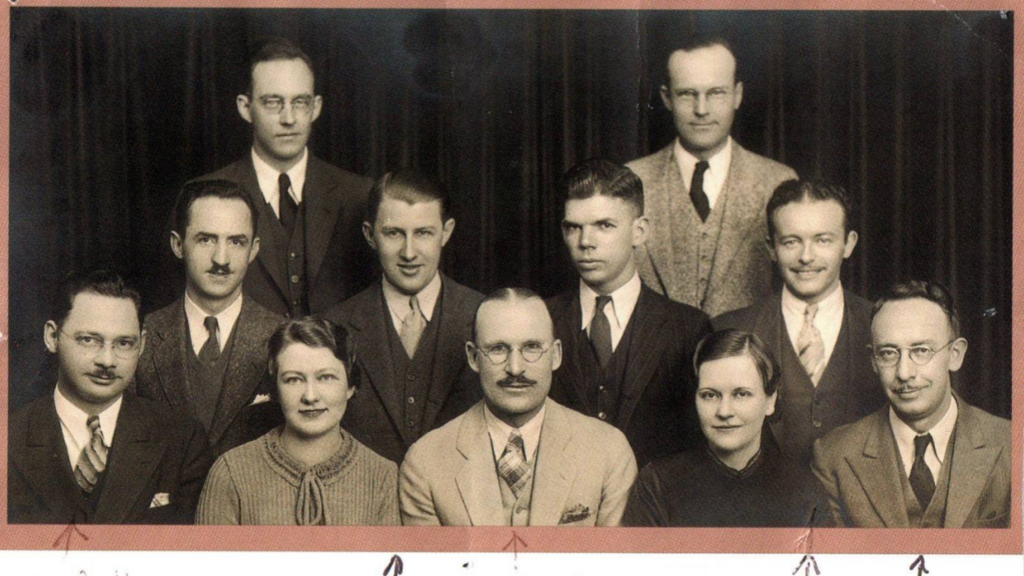 1952
1952Kellenberger Smith noted, “the number of patients examined in Speech Pathology in Oto was 246. This number increased to 1026 in the next four years and had continued to increase, necessitating additional staff.”
Johnson began to use a tape recorder in less traditional ways like bringing it to counseling situations as a revising machine.
A summer conference, "Twenty-five Years of Stuttering Research and its Clinical Application," was held. Dean E. Williams completed his doctorate in the Psychopathic Hospital laboratory, echoing early program history.
 1954
1954January the first admissions in the new Wendell Johnson building.
- 1955
Johnson relinquished his administrative duties but continued as an active faculty member. Stuttering in Children and Adults, edited by Johnson and Leutenegger, was published, marking thirty years of research at Iowa.
James F. Curtis became Chairman of the Council on Speech Pathology and Audiology.
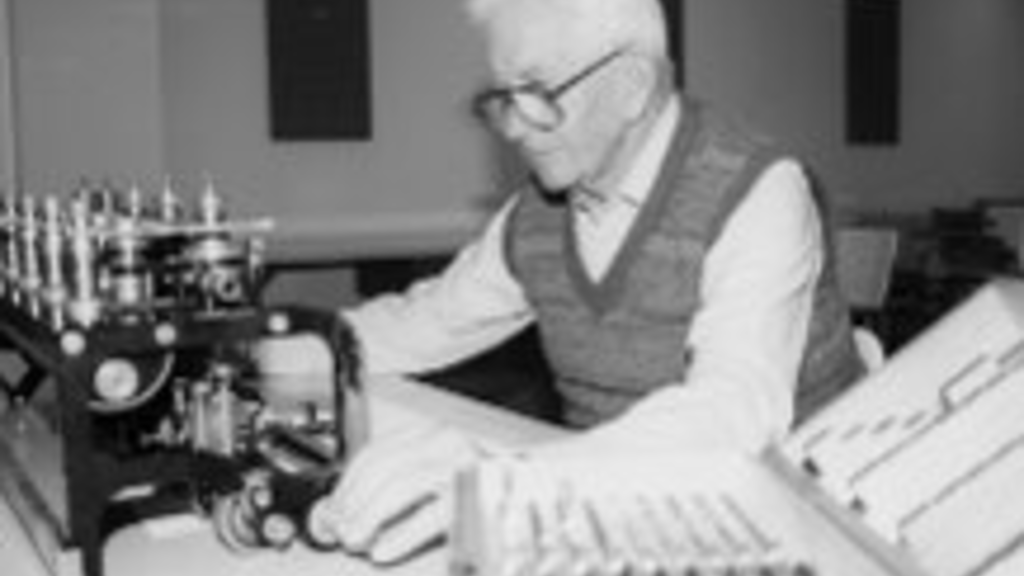
James F. Curtis Led the Program
1956-1968- 1956
On July 1st, the Department of Speech Pathology and Audiology was establishment.
Degrees began to come from the Department of Speech Pathology and Audiology.
- 1957
Dean Williams returned to the faculty to assume responsibility for work in stuttering.
- 1959
Iowa was the second state to be accepted by ASHA as a member of the ASHA House of Delegates.
- 1960
Curtis reported that the Department could be grouped into speech pathology, audiology, and speech and hearing science.
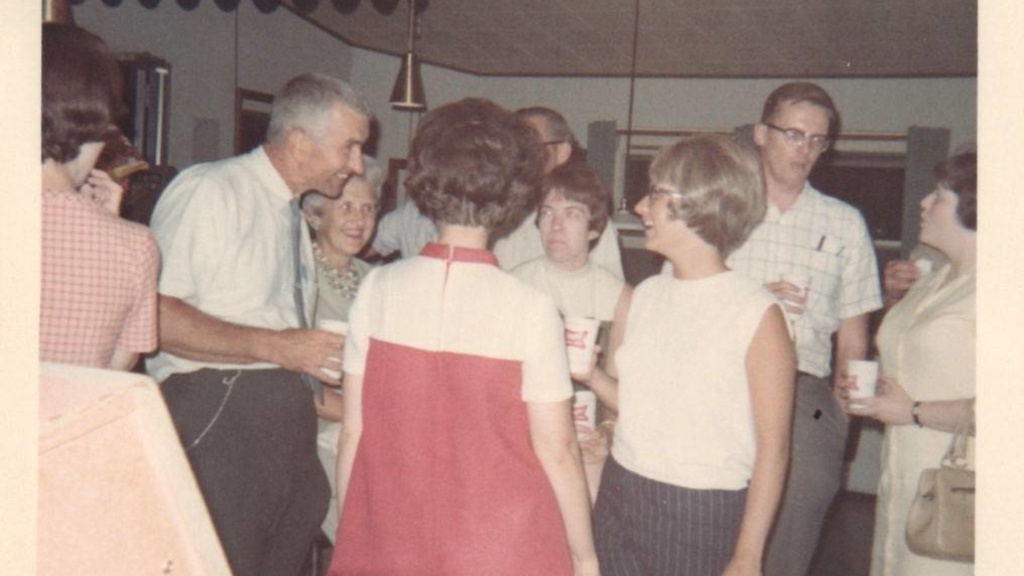 1962
1962The department included the presidents of two national organizations, Curtis as 1962 president of the American Speech and Hearing Association, Spriestersbach as 1961-1962 president of the American Cleft Palate Association.
Curtis served as president of the American Speech and Hearing Association. A University News release highlighted the interdisciplinary nature and productivity of the Iowa program, which led all other universities in Ph.D. degrees granted, clinic directors among graduates, ASHA Fellows and officers, and research output.
- 1963
Spriestersbach was president of ASHA in 1965 and of the American Cleft Palate Association in 1961-6256. The Department reorganized its curricula to require the M.A. degree as the lowest terminal degree for clinical specialists, reflecting the need for substantial graduate-level study.
 1965
1965Spriestersbach became Dean of the Graduate College, maintaining a tie between the Program/Department and the Graduate College reminiscent of Seashore's early role.
The public-school work was reorganized in the general reorganization of clinical services. The services provided long-sought revisions of administrative structure in the clinic area and revised curriculum.
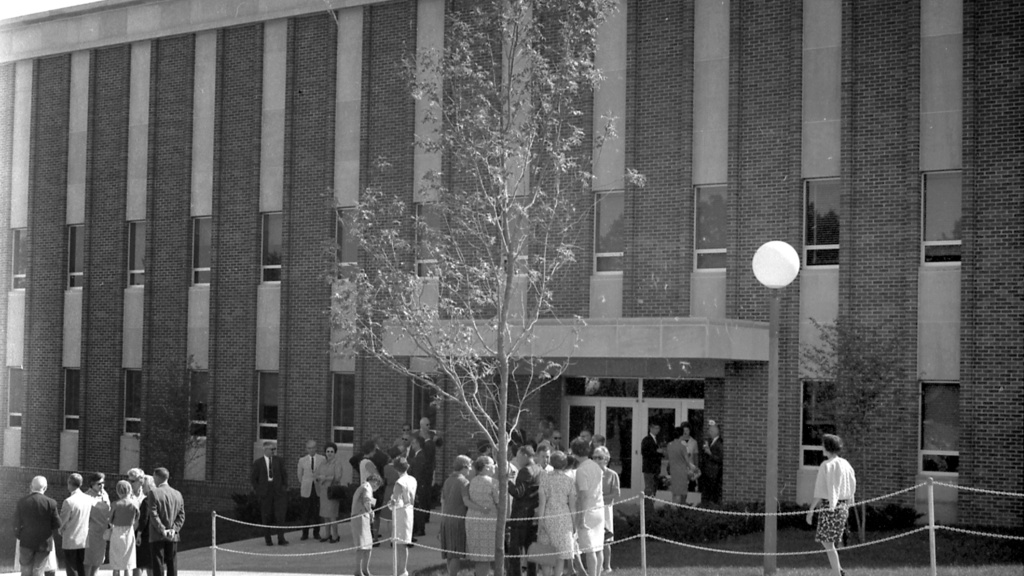 1967
1967Wendell Johnson Speech and Hearing Center was constructed. The department moved from East Hall into the new building.
The first departmental newsletter was published (Vol. 0, No. 1), beginning the tradition of regular circulation.
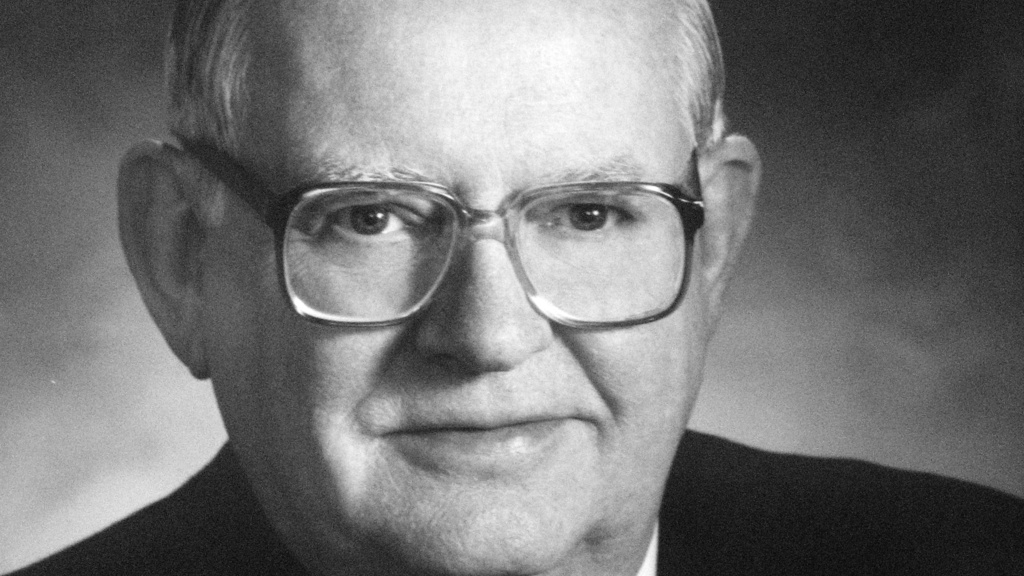
Kenneth Moll Led the Program
1968-1976- 1968
More than 25 PhD students were in training, 100 BA students, and 50 MA students.
June 11-15 the Wendell Johnson Speech and Hearing Center was dedicated during this week.
The Summer Clinic program had 8 to 10 resident counselors who were graduate students or seniors. Living with the 50 children for the six-week period.
The state of Iowa set a new minimum of a master’s degree level of preparation for speech clinicians following the National requirement change.
Curtis stepped down from administration to focus on teaching and research. By this time, the ASHA membership had grown to 13,000. The roster of Fellows of ASHA included sixteen past and present members of the Iowa Speech Pathology and Audiology faculty. Cooperation with the College of Dentistry entered a new phase with planned training in both directions. There were 235 speech clinicians in Iowa public schools, a significant increase since the Travis era.
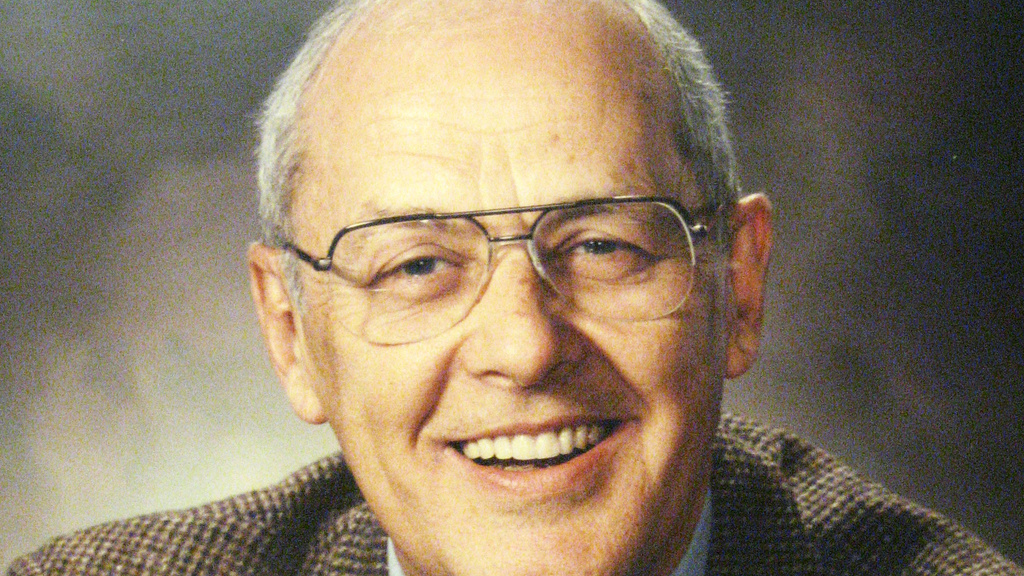
Hugh Morris Led the Program
1976-1980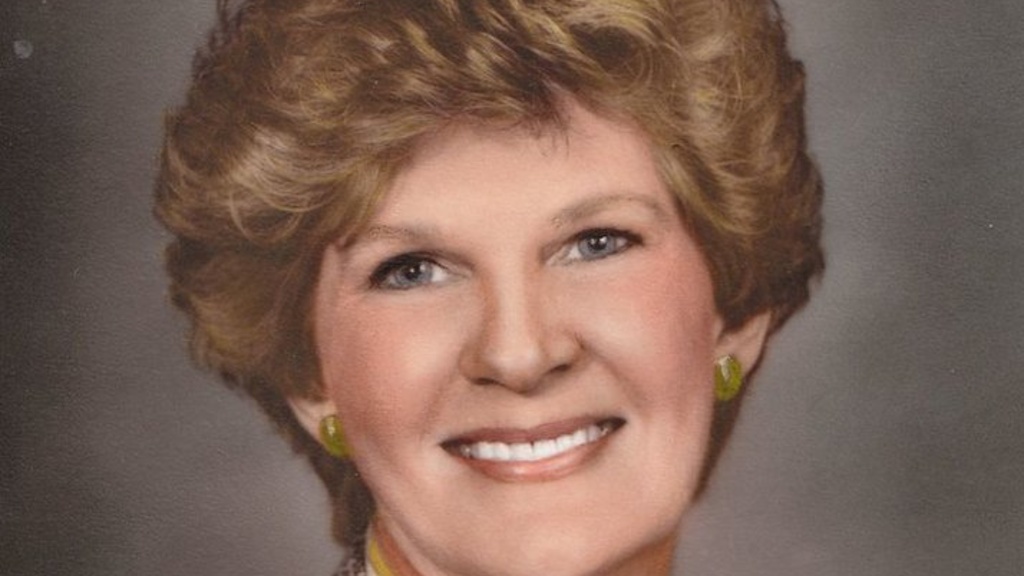
Julia Davis Led the Program
1980-1985 1981-1982
1981-1982Duane Spriestersbach, former speech pathology and audiology professor and faculty member, serves as interim president of the University of Iowa.
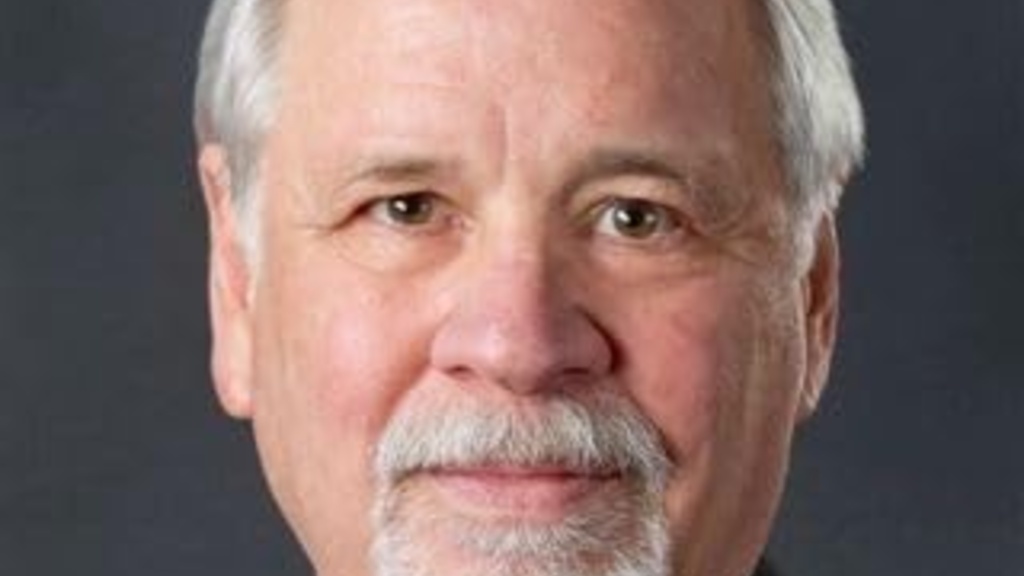
John Folkins Led the Program
1985-1993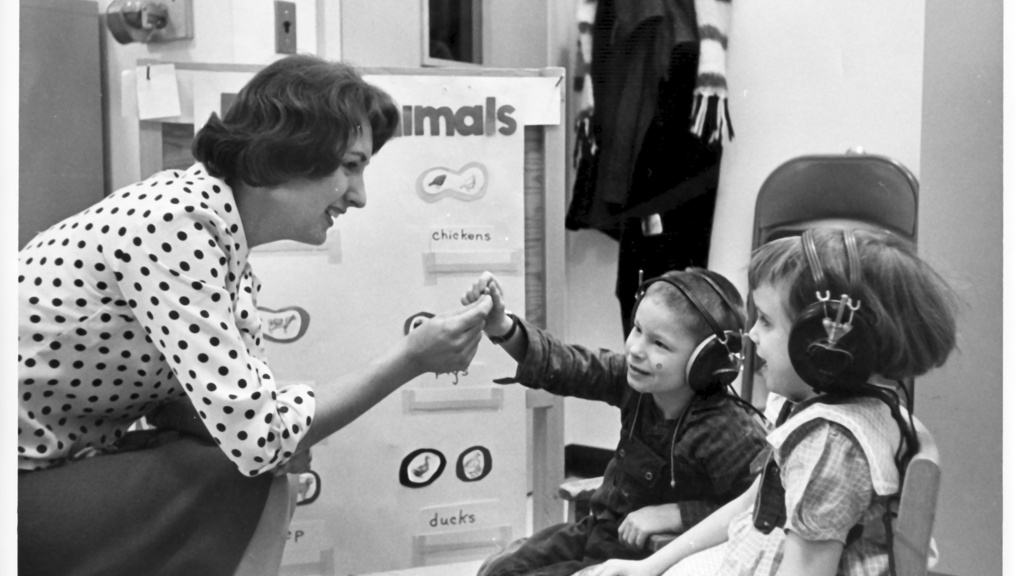 1990
1990The National Center for Voice and Speech was established with $5.8 million grant from the NIDCD, making Iowa the first and only National Center for Voice and Speech in the nation.
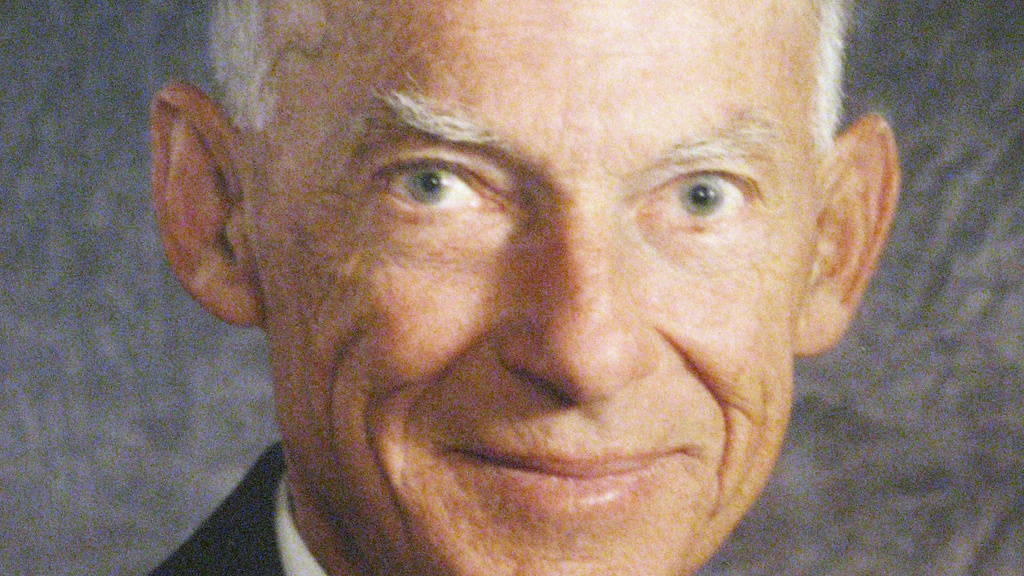
Arnold Small Led the Program
1993-1996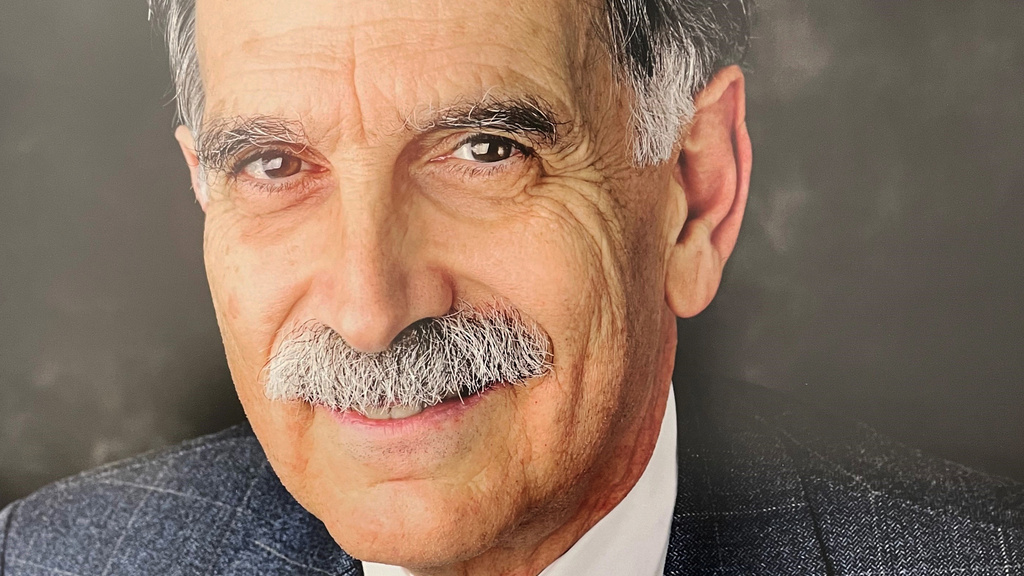
Richard Hurtig Led the Program
1996-2005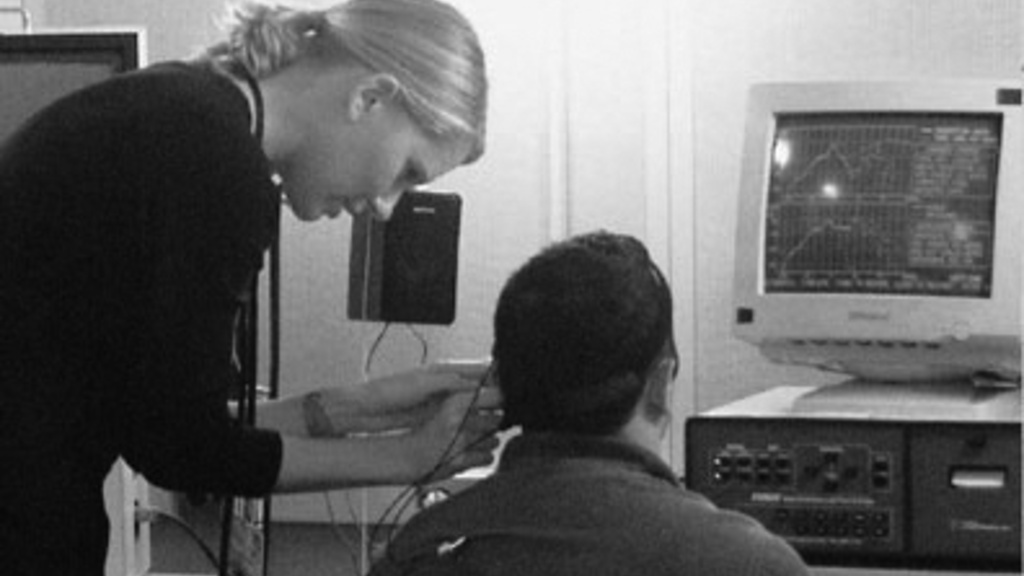 1996
1996NCVS receives third round of funding with nearly $900,000 annually for five years.
Clinical Research Center in language receives nearly $750,000 annually for five years.
Iowa Cochlear Implant Research Program receives third renewal funding from NIDCD.
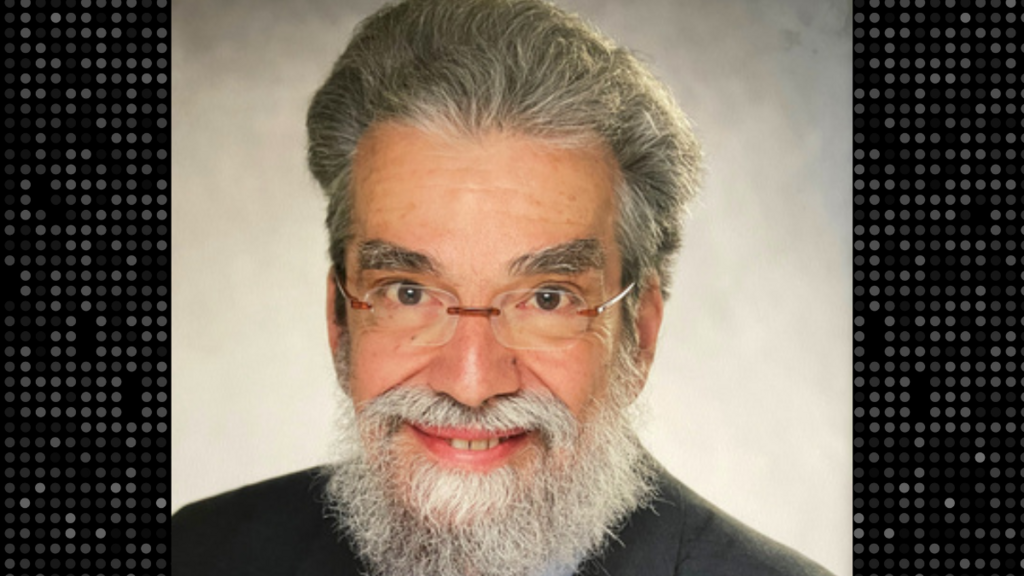
Paul Abbas Led the Program
2005-2011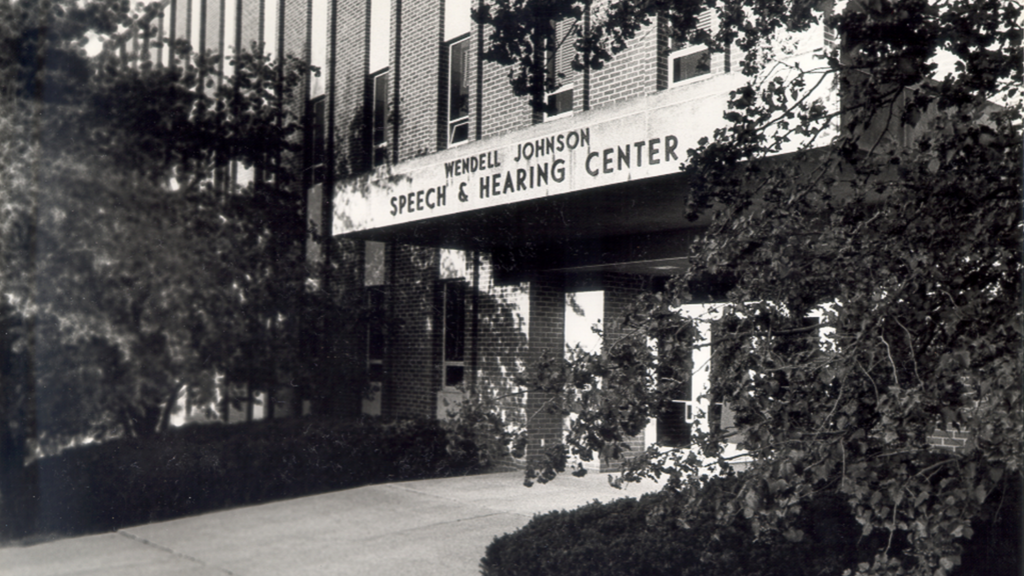 2007
200750th Anniversary of the Department of Speech Pathology and Audiology.
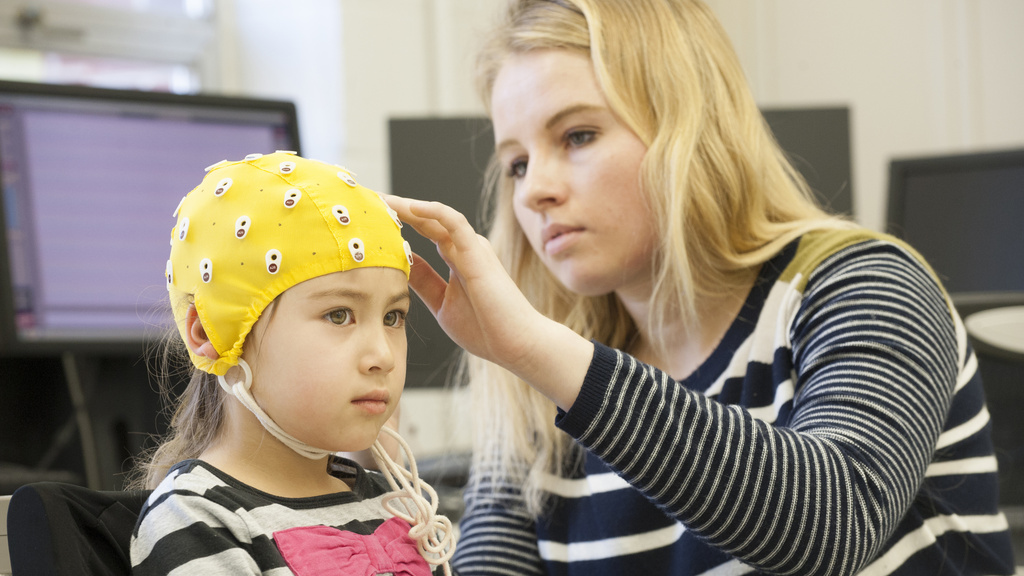 2008
2008Department name officially changed from "Speech Pathology and Audiology" to "Communication Sciences and Disorders".
J. Bruce Tomblin receives $8.9 million five-year grant for research on mild hearing loss in preschool children.
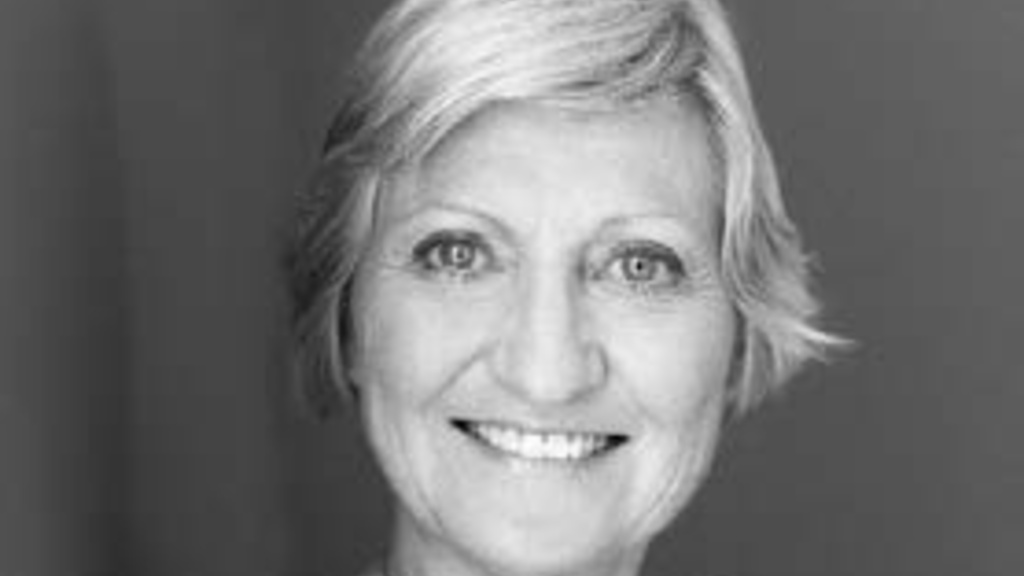
Ruth Bentler Led the Program
2011-2017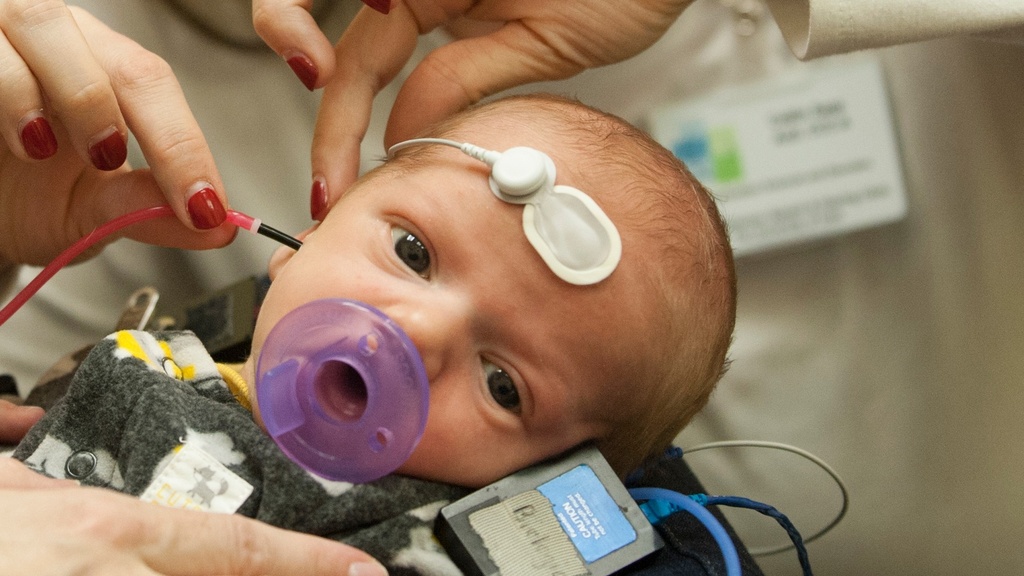 2012-2013
2012-2013U.S. News & World Report rankings: #1 in Speech-Language Pathology, #2 in Audiology!
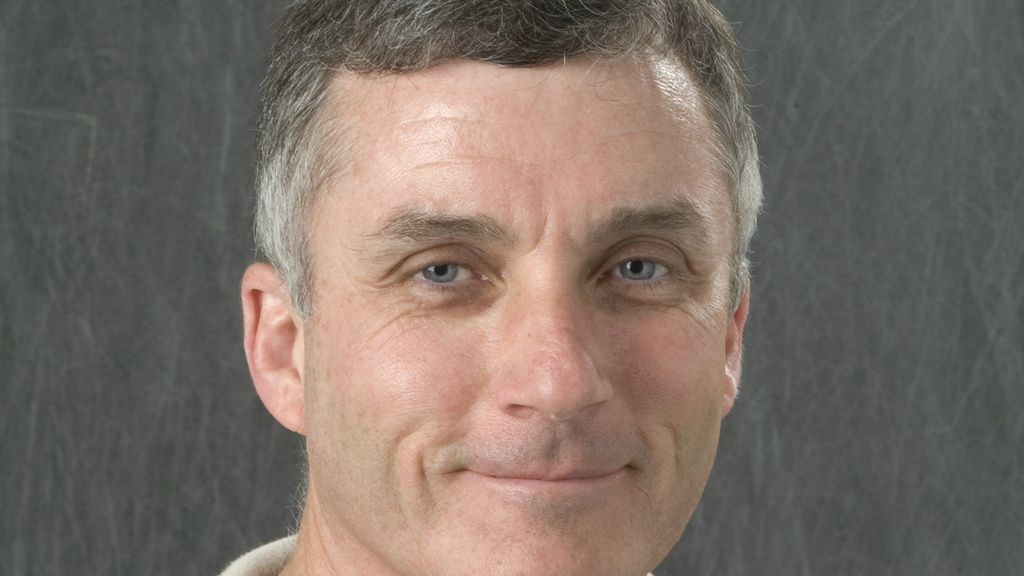
Jerry Moon Led the Program
2017-2020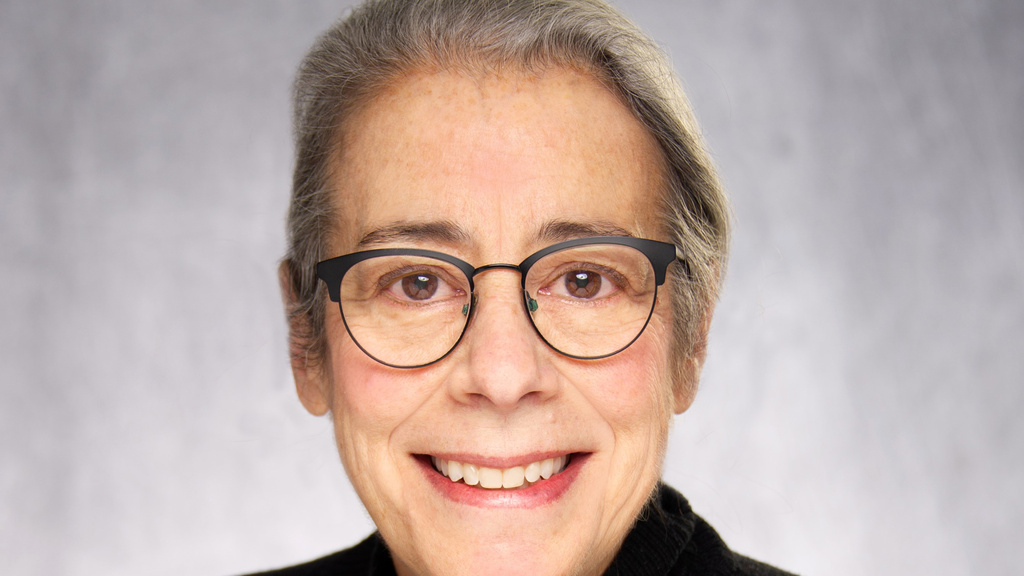
Carolyn J. Brown Led the Program
2020-2023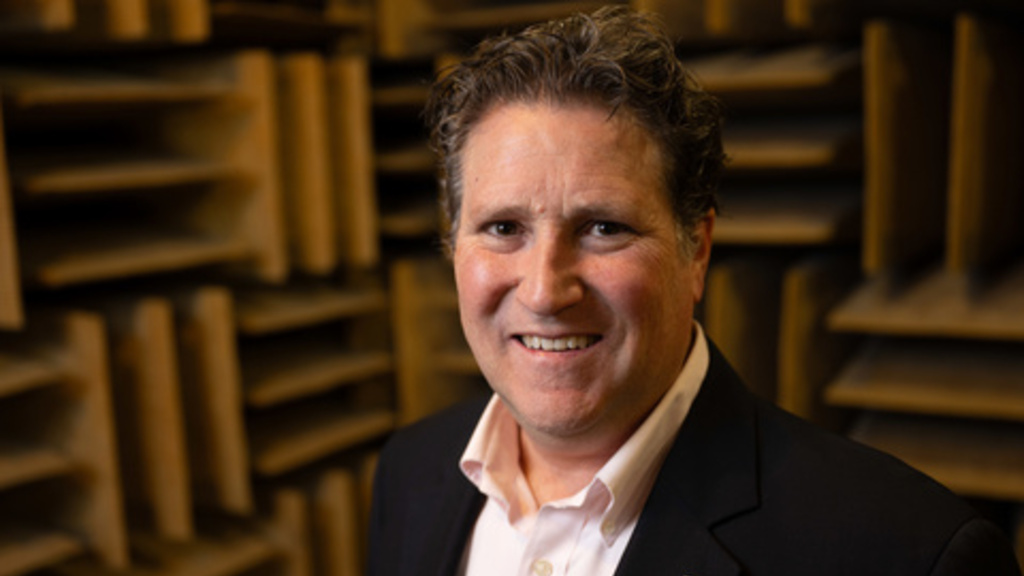
Eric Hunter Leads the Program
2023-Present 2025
2025The department moves to the new Health Sciences Academic Building.
ASHA celebrates 100th anniversary with commemorative visit to Iowa City.
